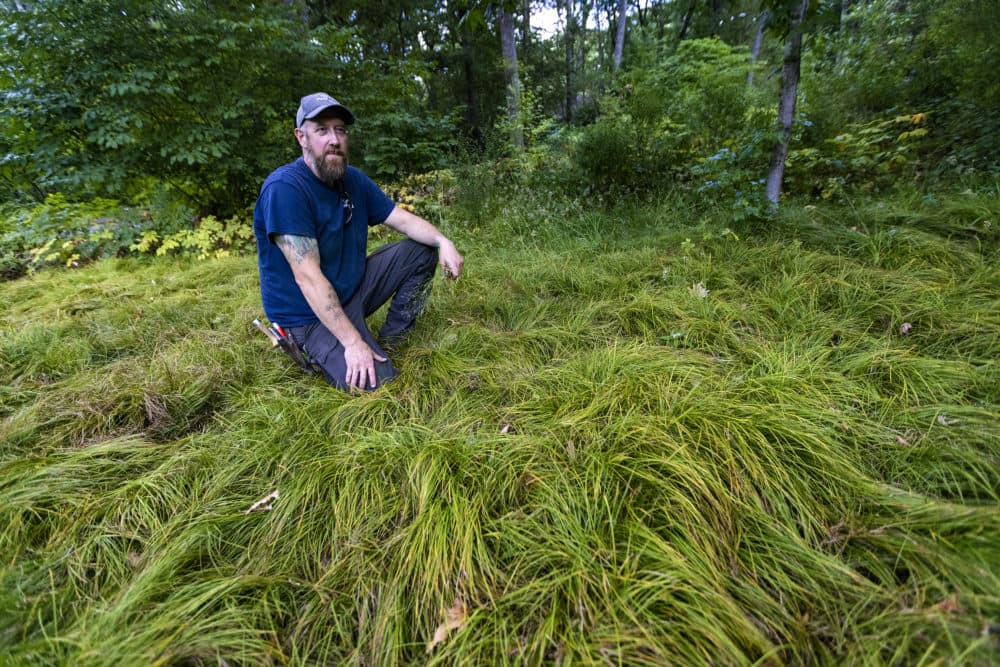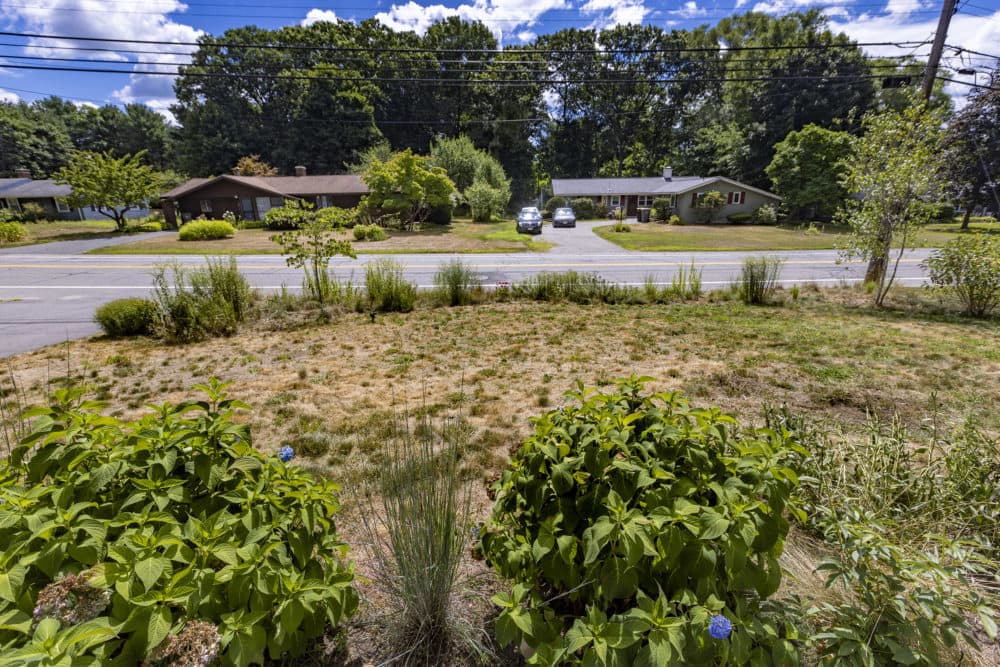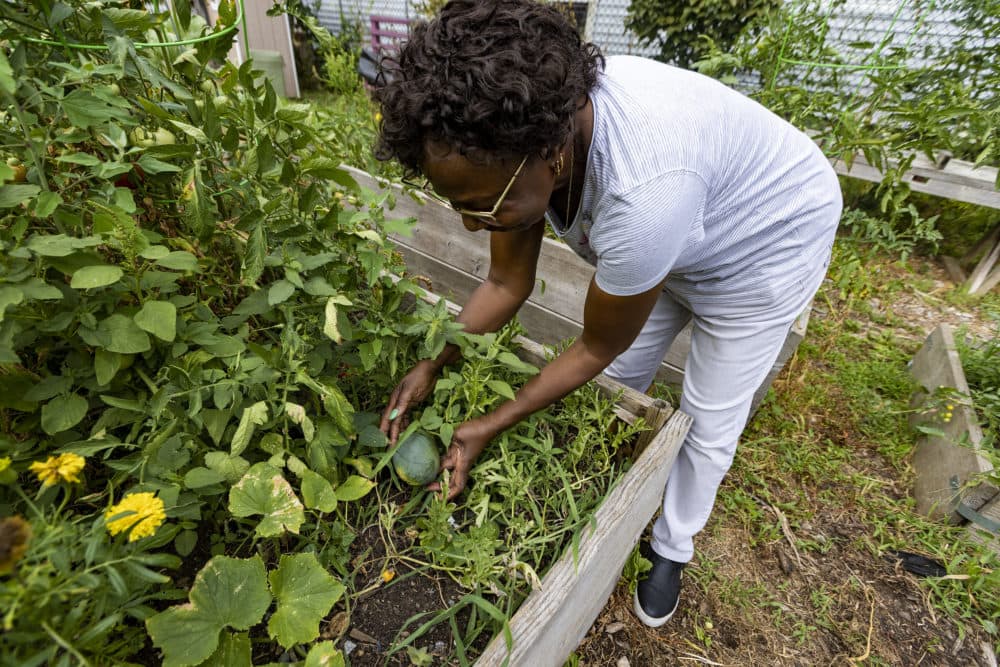Advertisement
Field Guide to Boston
8 easy ways to make your New England lawn more eco-friendly

Lawns cover about 40 million acres of the United States. Changing them up, even a bit, could have a vast impact.
Here are eight easy ways to make your lawn more eco-friendly while saving time and money (including a few bonus tips for you over-achievers).
1. Set your mower blade higher
That "putting green" look with two-inch grass leaves little room for insect life, and also means you'll have to mow and water it more. Uli Lorimer, director of horticulture at the Native Plant Trust, recommends setting the mower blade as high as possible.
(Shut the mower off first! Lawn mower accidents send close to 6,400 people to the ER each year.)
2. Leave the lawn clippings
When you mow your lawn, don't rake up the lawn clippings. "Every time you mow the lawn and you let those clippings stay on the lawn, you're basically fertilizing your lawn with the clipped clover," said Lorimer.
3. Stop pouring chemicals on your lawn
Lorimer's next tip is to ask yourself: "Am I paying somebody a lot of money to put down fertilizers and poisons on my lawn?" If so, why don't you keep that money and go have some nice dinners instead? Or send a small donation to your favorite public radio station.
4. Water it less often
If it turns brown, so what? You're saving the planet.

5. Don't be that sprinkler guy
Are you that guy with the sprinklers on a timer? Because I've seen them go on during a rainstorm. Don't be that guy. Also — stop watering the sidewalk.
6. Mow less frequently
A 2018 study of lawns in Springfield found that mowing every other week, instead of every single week, increased the number of bees and wildflowers. A follow-up study found that the longer grass didn't bring more ticks.
7. Don't mow the weird parts
You know that part of your lawn that's on a steep hill and really dangerous to mow? Don't mow it. You can also skip that weird corner where the mower can't reach.
8. Leave the leaves on the lawn
When leaves fall from your trees, leave them there. Leaf litter offers habitat for overwintering butterflies transitioning from caterpillar to adult, said Katrina Crocker, lead horticulturist with Belmont's Landscape Collaborative. Too messy for you? Crocker suggests raking them into a tidy pile around the base of the tree. She says "cues to care" like this show the neighbors that you're not a slob.
Ready for more? Here are 4 next-level ideas:
1. Next time a tree (or shrub, or flower bush) dies, replace it with a native plant
Ecologist Doug Tallamy makes a compelling case for planting natives in your yard: because local bugs haven't evolved to eat exotic flowers. (If you don't like bugs, fine, but remember that they feed birds.) If you've got extra energy, pull out some of that invasive Oriental bittersweet that's strangling your oak tree.
2. Add some native plants to your turf
"You can plant bulbs in the fall, you can plant violets...clover is great," said Lorimer, whose organization, the Native Plant Trust, is a good source of information on native plants and lawn alternatives. Clover is especially good because it can pull nitrogen out of the air and turn it into a form that plants can use, he said. Free fertilizer! "Your lawn can actually support a lot of life," he added, "and maybe you spend a month doing something else other than mowing and fertilizing."
3. Plant some vegetables
Even a teeny city yard can grow a lot of food, said Joy Gary, executive director of the Boston Farms Community Land Trust: "Depending upon the size of your lot, you could probably do greens and produce all of your greens for the year."

And if gardening isn't your bag, Gary suggests reaching out to a local community garden and loaning your lawn to a land-hungry urban farmer. "I don't know of any grower that's not looking for more land to grow on, assuming your soil is safe." In Boston, the Food Project and the Urban Farming Institute offer supplies and guidance for growing food at home.
4. Rip out your lawn
Andrew Whittaker, the owner of the Framingham eco-landscape company Green Abundance by Design, says there are lots of possible lawn replacements, depending on what you like. If you want something low-maintenance, he suggests a "No mow" grass mixture with white clover, which offers "a very nice floppy wavy grass aesthetic." Other fun options: creeping phlox and wild strawberry.
This article was originally published on August 22, 2022.
